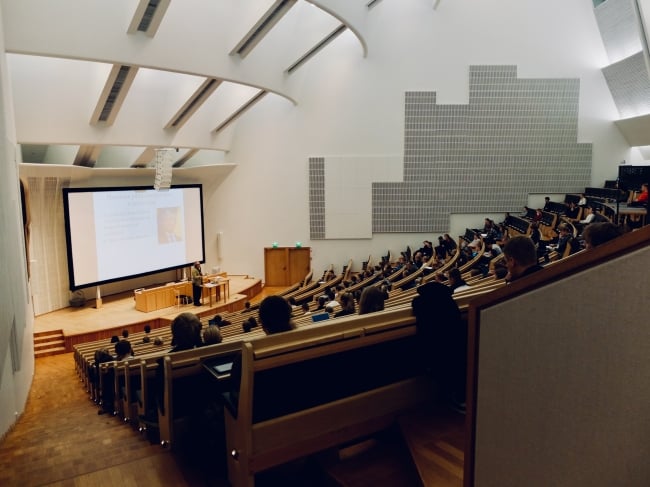You have /5 articles left.
Sign up for a free account or log in.
Starting off the academic term can feel a little awkward, both for students and professors.
“The first day is not only challenging for me but for many students who are attending the university as a first-semester student and who may not know many students in the learning environment, specifically given the fact my classes are large lectures,” explains Sheila Tabanli, assistant professor of teaching at Rutgers University.
While some of the awkwardness must remain, faculty members can alleviate some tension by administering a survey on the first day or before the start of the term to boost student engagement.
In a spring 2023 Student Voice survey by Inside Higher Ed and College Pulse, 34 percent of respondents said professors can take more of an interest in getting to know them to promote academic success.
How to: Surveys can be administered as a paper handout or as an online quiz taken on their phone or other device. Tabanli uses a site that does not require a login and allows for anonymous responses, “although almost all of them use their actual names,” she says.
“I explicitly inform students of the purpose of this ungraded survey, which serves as … a get-to-know-your-peers/instructor activity,” Tabanli says.
What a survey can do: When creating a survey, professors should consider their goals of the survey and what information will support those goals.
- Help in Getting to Know the Student
To create rapport with a student, faculty can ask for a student’s preferred name, class standing, hometown, major and pronouns, as well as interests outside of class (What is your favorite song? What is your favorite food or meal?).
“The question that I enjoy asking the most is about students’ passions and what they are exceptionally good at,” Tabanli says. “I learned a lot about my students through these short questions where students are reminded of what they are very good at and channel the same enthusiasm to learning and studying math, which is not an easy task for everyone.”
A first-day survey can also provide context about a student’s life—from veteran or employment status to if they are a caretaker—or any other outside context that might impact their role as a student. Two in three Student Voice survey respondents say deadlines should be flexible for extenuating circumstances, and understanding external pressures on a student can help professors be flexible.
- Measure Prior Knowledge or Skills
A first-day survey can serve as a measuring point for a faculty member to evaluate their familiarity with content. An open-ended question (What is your relationship with this subject?) or a content-specific one (What is the function of your spleen?) creates a baseline for professors to identify student learning opportunities as individuals or as a class.
Students can also provide a question they have about the material. (What questions do you want to know the answer to? What challenges do you anticipate in this course?) Responses can determine future content and promote engagement because it is specific and relevant to their interests.
- Identify Learning Styles
The Student Voice survey demonstrated a bias toward active learning styles (interactive lectures, case studies, small group discussions, etc.), but a significant number still preferred traditional lectures. More than half of Student Voice respondents say they’ve struggled in a class due to a teaching style that didn’t work for them.
Professors can gauge their own students’ interests in learning styles in a survey (How do you learn best? What should this class NOT be like? What else should I know to best support you in this course?).
- Connect Learning Objectives to Goals
Each student is in class for a reason, though probably not the same reason. Understanding what prompted a student to enroll in a course (Why did you choose this class?) can help professors connect material to their future goals and set learning objectives (What do you hope to get out of this class?).
Why survey: Tabanli says the exercise promotes belonging and creates community.
The survey can also provide an engagement tool beyond the start of the course. In the second class meeting, Tabanli shares an analysis of responses, highlighting common themes across student submissions. She also reminds students of their responses to questions such as what makes a good student and why they’re taking the course.
This story was submitted to us by a reader just like you! Share your student success initiatives with us here.





